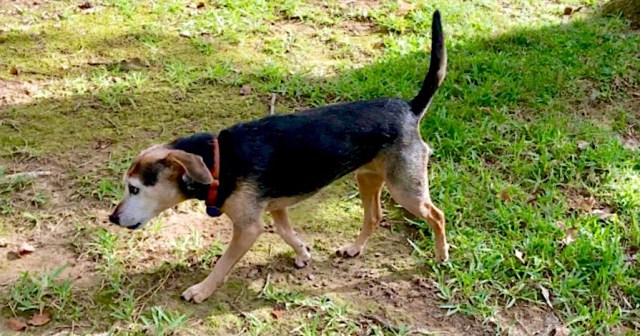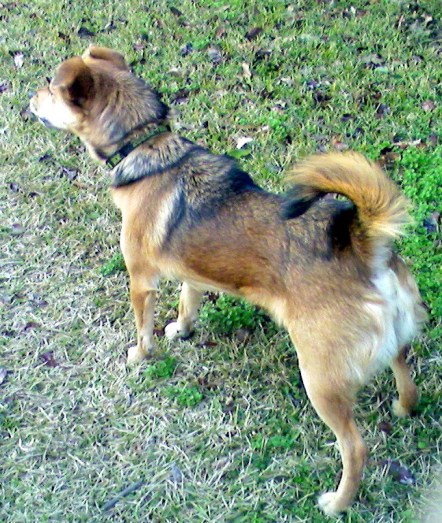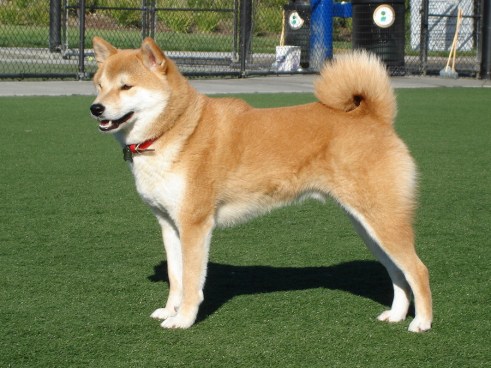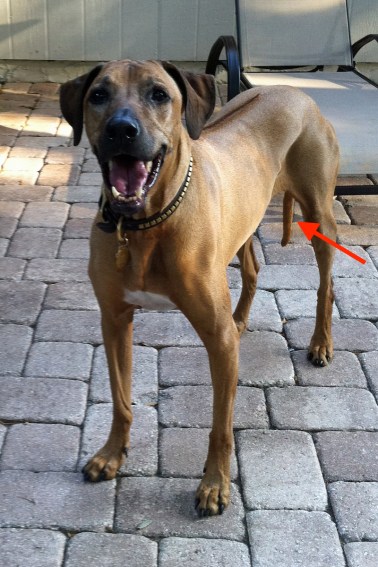Barks Blog
Does a Wagging Tail Mean a Happy Dog?

Zani’s tail is up, and you’ll see in the video below that it is wagging. Does she look friendly and happy?
Why do dogs wag their tails? The prevailing view is that they do so when they feel happy and friendly. Many do, but dogs also wag their tails in other situations. So the answer to the title question is no. Dogs wagging their tails are not always expressing friendliness or joy. Not by a long shot.
Many dogs will wag their tails from arousal or when performing predatory behaviors. Some will wag when they are getting ready to aggress. My dog Clara has a particular wag when she is anxious. When observing a dog wagging its tail, we need to look at the rest of the body language to determine what’s going on. Some things to look at are:
- how the dog is moving and in what direction;
- whether its movements are stiff or relaxed;
- whether its mouth is tight or relaxed; and
- whether the dog is looking directly at something (including you!).
An important factor is the carriage of the tail. How high is the tail? (See section below on breed differences.) Other important factors are whether the tail is wagging fast or slow and whether it is stiff or loose. These things can mean the difference between an eager greeting and an oncoming attack. We can never assume that a wagging tail means a dog is friendly.
The Direction of the Wag
There is scientific research that has found a correlation between the direction of a dog’s tail wag with its emotional state. It was found that the tail wagged predominantly to the right when the dog was responding to something it might want to approach, such as its owner. The tail wagged more to the left in response to something the dog would want to avoid. When you look at the video below, can you identify a sidedness to Zani’s tail wagging? Does it correlate with what we find at the end?
This research verifies what we can already see: dogs don’t wag their tails only to express happiness. They also wag their tails during general arousal, aggression, and other emotional states.
Tail Carriage
I haven’t found any research on the height of the tail when wagging, but experienced dog trainers learn to pay attention to that. In general terms, low and loose wags are usually friendlier than wags with the tail held high and stiff.
I think it’s hard to do research about that, though, because of big differences in “normal” tail carriage between breeds, not to mention between individual dogs.
Many northern breeds, like this Shiba Inu, have a naturally high tail carriage. Their tails are built that way.
On the other hand, some hound breeds have naturally low hanging or even tucked tails. Rounder the Rhodesian Ridgeback is in a good mood in this photo, but his tail is hanging straight down. You can find extreme examples of this in whippets and greyhounds, who often tuck their tails between their legs when standing. This tail carriage could mean “I am miserable or afraid” in many other dogs. For the whippet, it’s often just business as usual.

Summer is expressing predatory aggression in her stance, the set of her mouth, and the curl of her tail
My mixed breed dog Summer probably had some northern breeds in the mix. She held her tail at different heights depending on her mood and activities. She wasn’t all that waggy, but she had a beautiful, low, wide wag when she saw someone she loved. When her tail was tightly curled up over her back it always meant she was aroused, often predatory. In this photo, she was watching a cat on the other side of our fence.
Note the stiffness of her body, the slight lean forward, the set of her mouth, and the piloerection (hackling) around her shoulders.
Why Is This Dog Wagging Her Tail?
The video shows my dog Zani in my friend’s yard. The video shows a few seconds of her behavior. Her tail is wagging the whole time. It first plays with the sound off, so you can concentrate on her body language. Then it plays again with sound. Then finally you see the reason for her behavior. Is she wagging because she is friendly?
Link to the movie for email subscribers.
[youtube https://www.youtube.com/watch?v=luFD7wUonXE?feature=oembed]
What Other Body Language Accompanies Zani’s Wagging Tail?
Watch the way Zani moves. Is she moving toward something, away from something, or both? Is she eagerly approaching something? Is she looking at something, listening to something? Look at the fur down the center of her back. Look at the set of her mouth.
You’ll have to watch the movie to see what Zani was responding to, and hear my own final conclusion of what was going on for her. One thing I haven’t mentioned yet: the whole sequence is adorable. Enjoy!
Related Pages and Posts
- Dog Body Language Posts and Videos
- Dog Body Language Study: Intruder in the Yard!
- Dog Facial Expressions: Stress
Photo Credits
Shiba Inu: Takashiba via Wikimedia Commons
Rounder the Ridgeback: Marge Rogers
All others: Eileen Anderson
Reference
Quaranta, A., Siniscalchi, M., & Vallortigara, G. (2007). Asymmetric tail-wagging responses by dogs to different emotive stimuli. Current Biology, 17(6), R199-R201.
Copyright 2018 Eileen Anderson


